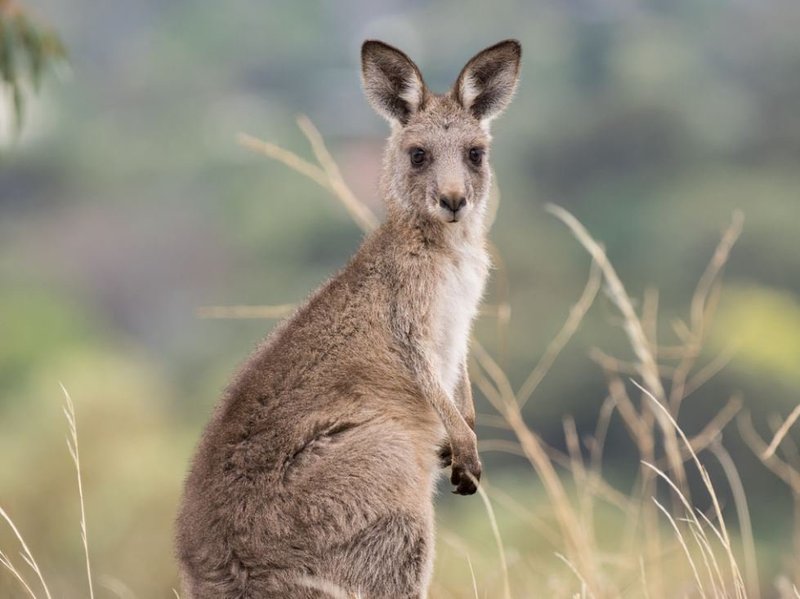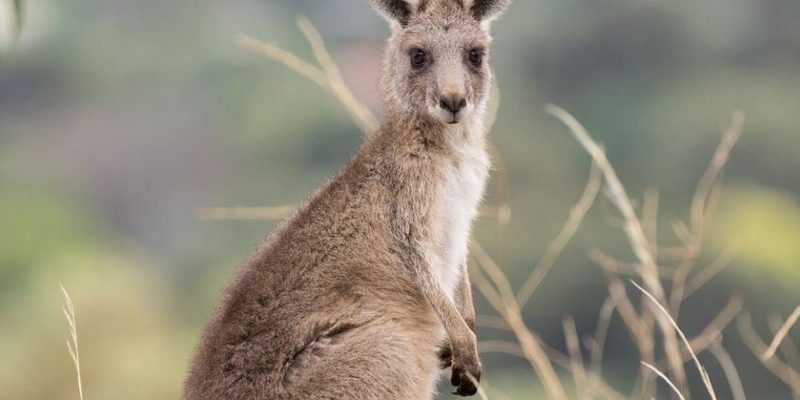
Just like any wild animal, eastern grey kangaroos have their own set of characteristics and behaviors that can sometimes lead to dangerous situations. Imagine encountering a kangaroo in the wild—while they might look calm and gentle, there’s a whole world of instincts and territoriality beneath that surface. Understanding their nature can help us navigate not just our curiosity about them, but also our safety when we find ourselves in their territory.
Understanding the Eastern Grey Kangaroo
Eastern grey kangaroos are one of the largest species of kangaroos, weighing up to 70 kilograms (about 150 pounds) and stretching over 1.5 meters (around 5 feet) tall when fully grown. They’re primarily found in eastern Australia, from Cape York to Tasmania. Sporting soft grey fur, long powerful hind legs, and a distinctive long tail, they’re built for speed and agility. But here’s the thing—you might not realize just how strong they are until you see one up close.
These kangaroos live in groups known as “mobs,” which can enhance their sense of safety and community. Being social creatures, they often exhibit playful behavior, especially the young ones. But just like that old friend who might get a little feisty when you push their buttons, kangaroos have their limits too. When they feel threatened or cornered, they can become aggressive.
Behavior: Territorial Instincts
You might be wondering how territorial instincts come into play with these kangaroos. Well, like many animals, eastern grey kangaroos can be protective of their home range, especially during mating season or when they have young joeys to safeguard. If a person unknowingly wanders too close to a mob, these kangaroos might perceive it as a threat, leading to defensive posturing.
In rare cases, kangaroos may engage in aggressive behavior to defend their territory. This can include thumping their feet, puffing out their chests, and even charging at intruders. It’s important to remember that while attacks are uncommon, they can happen—especially if the kangaroo feels it has no way to escape.
Physical Strength and Potential Risks
Let’s talk about the raw power of the eastern grey kangaroo. With those strong hind legs, they can leap over obstacles and reach speeds up to 60 kilometers per hour (37 miles per hour) in a matter of seconds. Just picture being charged by an animal that can jump over a car! That’s why it’s crucial to respect their space.
In some rare instances, humans have sustained injuries from encounters with kangaroos, primarily from kicks. A kangaroo’s kick can be quite powerful and might lead to serious injuries, especially if the animal feels cornered or threatened. So, it’s always best to watch from a distance rather than approaching them, even if they seem calm.
Encounters with Eastern Grey Kangaroos
Have you ever seen a kangaroo up close in the wild? For many, the thrill of spotting one from a distance can be a memorable experience. However, if you happen to come across an eastern grey kangaroo, being aware of your surroundings is key. If they are feeding or resting, the best action is to keep your distance.
When in national parks or wildlife areas, always abide by the park’s rules regarding wildlife interactions. You can enjoy observing them without causing disruption or distress. Many parks have guidelines on how far to stay from wildlife, and following these can help prevent negative encounters.
What to Do if You Encounter One
If you find yourself face-to-face with an eastern grey kangaroo, it’s essential to keep a cool head. Here are some steps to ensure your safety:
- Stay Calm: Don’t panic. Sudden movements can startle the kangaroo.
- Back Away Slowly: If the kangaroo doesn’t seem aggressive, slowly back away without turning your back to it.
- Avoid Eye Contact: Direct eye contact might be seen as a threat.
- Do Not Feed: Avoid feeding kangaroos, as this can alter their natural behavior.
Most importantly, remember that these are wild animals. While they might not seek out confrontation, they will defend themselves and their families if they feel threatened.
In the end, while eastern grey kangaroos can be dangerous under certain circumstances, they are not inherently aggressive creatures. Like many wild animals, their behaviors stem from instincts that have evolved over time. By respecting their space and understanding their nature, we can enjoy their presence while keeping ourselves safe.
So the next time you find yourself marveling at these majestic creatures, remember: they may look cuddly, but they are still wild. With a little knowledge and respect, we can coexist peacefully with the fascinating wildlife around us.

